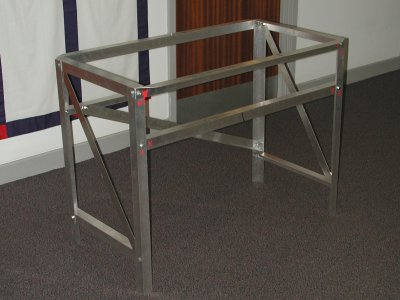
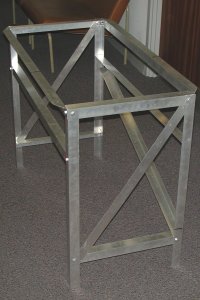
The Drying Frame


5 x 1.25m angle: for the 4 long lengths and 1 rear cross-brace
4 x 1.00m angle: for the 4 legs
4 x 0.48m angle: for the 4 side bars
2 x 1.00m strip: for the 2 side cross-braces
The side cross-braces of the frame illustrated (the one we took to Nepal) were made from strip aluminium to reduce weight. The frame was completely dismantled for carriage to Nepal. On the treks the two side frames were carried together assembled, and only the long lengths and rear cross brace removed when packing the equipment away. The side cross-braces did get pushed in during carriage, but this did not affect the rigidity of the frame. Since the Nepal expedition another frame was built and used for fieldwork, but this time using angle aluminium for the side cross-braces. This gave added rigidity to the frame compared with the strip braces.
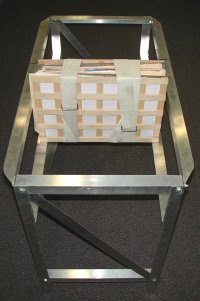
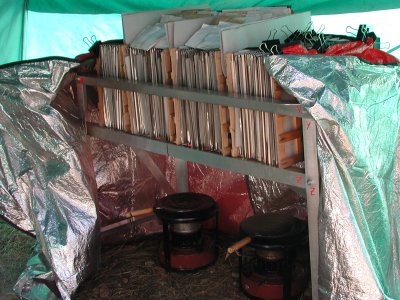
The width of the sides is determined by the size of the presses used (remembering that the contents of the presses may extend beyond the measurments of the press ends). The two lower lengths are positioned about 25 cm down from the top of the frame, the angles facing inwards forming a shelf for the specimens. The width we used was generous and the length of the side bars could easily be reduced by 1 cm to prevent the presses slipping down.
Kerosene wick stoves were used as the heat source. These can be filled up in the evening, lit and turned down low to give a gentle, constant heat throughout the night. Metal heat dissipators (the kind used on domestic gas stoves) were put on top of the stoves to spread the heat out more evenly across the presses. The stove wicks need checking periodically and trimmed as necessary. At altitude the stoves burn less efficiently and the wicks burn down more quickly.
Two foil-lined ground sheets (Lifesystems mountain sheet) were used as a 'skirt' to wrap around the drying frame and keep the heat in. These were attached using large bulldog clips as shown. The plant specimens are sandwiched in the presses with blotting paper and corrugated aluminium sheets. The heat from the stoves should pass up through the 'flues' of the corrugations, drying the blotting paper, which, in turn, absorbs the moisture out of the plant material. For this to work efficiently all gaps between the presses must be sealed. Hence the skirt needs to be clipped round the top of the presses, and the gaps between presses blocked with spare blotting paper.
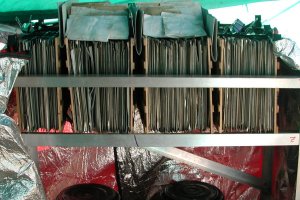
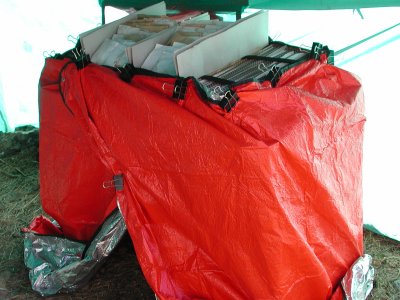
The drying frame is a very efficient way of preparing good quality herbarium specimens, and it also has some other benefits. Spare heat escaping from the top can be put to good use drying moss specimens and bulky carpological collections, and even damp clothing! Anything placed on top of the presses must be arranged so as not to stop the flow of air up through the corrugates. Hence bryophyte packets are stacked up end on and usually raised up on a spare press end. Seed collections can also benefit from hanging in bags from a line tied between the tent poles above the drying frame where the warmth helps slowly dry them out without 'cooking' them.